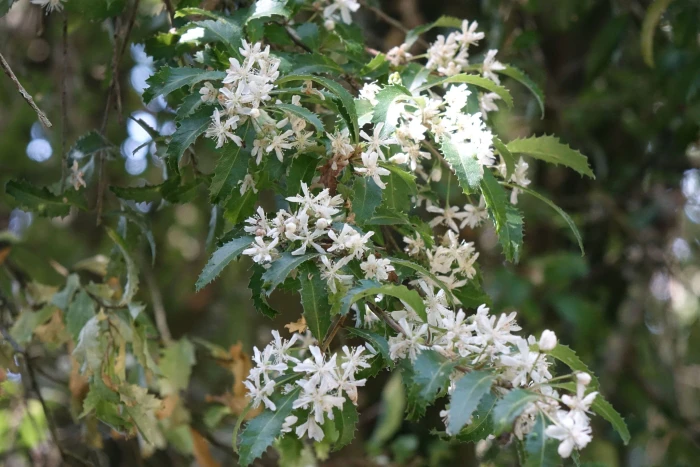Narrow-Leaved Lacebark
(Hoheria angustifolia)
Narrow-Leaved Lacebark (Hoheria angustifolia)
/
/

John Barkla
CC BY 4.0
Image By:
John Barkla
Recorded By:
Copyright:
CC BY 4.0
Copyright Notice:
Photo by: John Barkla | License Type: CC BY 4.0 | License URL: http://creativecommons.org/licenses/by/4.0/ | Rights Holder: John Barkla | Publisher: iNaturalist | Date Created: 2019-01-27T15:04:10-08:00 |




















































Estimated Native Range
Climate Requirements for Webster Groves, Missouri
| This Plant | Your Site | Plant Suitability for Your Location | ||
|---|---|---|---|---|
| • Precipitation | 22" - 146" | 39" | Aquatic | Aquatic |
| • High Temp. | 61°F - 76°F | 89°F | Your summers may be too hot for this plant. | Too hot |
| • Low Temp. | 19°F - 46°F | 21°F | Your winter temperatures are normal for this plant | Excellent |
This plant should grow very well at your location but requires an aquatic environment.
Summary
Hoheria angustifolia, commonly known as Narrow-leaved Lacebark, is an evergreen tree or large shrub with a graceful weeping habit, native to the forest margins and open areas of New Zealand. It can grow up to 10 meters (33 feet) tall and is characterized by its grey-green to dark green leaves. The plant exhibits a divaricating, small-leaved habit when young, transitioning to adult leaves that are narrow and coarsely toothed. From December to February, it produces clusters of white, fragrant flowers that are highly attractive to bees and other pollinators.
Narrow-leaved Lacebark is valued for its year-round foliage and the delicate, lace-like appearance of its flowers. It is suitable for urban planting, as a specimen tree, or for use in mixed borders due to its ornamental leaves and flowers. It adapts well to full sun or part shade and requires medium to high amounts of water, thriving in soils with medium drainage. While it is generally low-maintenance, it may be susceptible to root rot in poorly drained soils. In areas outside its native range, it should be monitored for potential invasiveness.CC BY-SA 4.0
Narrow-leaved Lacebark is valued for its year-round foliage and the delicate, lace-like appearance of its flowers. It is suitable for urban planting, as a specimen tree, or for use in mixed borders due to its ornamental leaves and flowers. It adapts well to full sun or part shade and requires medium to high amounts of water, thriving in soils with medium drainage. While it is generally low-maintenance, it may be susceptible to root rot in poorly drained soils. In areas outside its native range, it should be monitored for potential invasiveness.CC BY-SA 4.0
Plant Description
- Plant Type: Tree
- Height: 23-33 feet
- Width: 6-10 feet
- Growth Rate: Moderate
- Flower Color: White
- Flowering Season: Summer, Fall
- Leaf Retention: Evergreen
Growth Requirements
- Sun: Full Sun, Part Shade
- Water: Medium, High
- Drainage: Medium
Common Uses
Bank Stabilization, Low Maintenance, Salt Tolerant
Natural Habitat
Forest margins and open areas of New Zealand
Other Names
Common Names:
Scientific Names: Hoheria angustifolia, Hoheria populnea var. angustifolia
GBIF Accepted Name: Hoheria angustifolia Raoul